Home
> 4D Maze Game
Download
|
The Idea
In the Maze
> Notes
Reference
The Fourth Dimension
Can You See It?
|
The Tesseract
|
> The Tesseract, Part Two |
|
How Much Space Is There?
Rotations
How to Point
How to Orient Yourself
Volumes
Walls Are Opaque
|
Some Mathematics
Bibliography
The Tesseract, Part Two
There's more to cubes and tesseracts than just faces … there are also vertices and edges and so on, and those are what I want to talk about here.There's a simple formula for how many k-dimensional parts the n-dimensional analogue of the cube has, but it's also quite easy to work out the numbers. A cube, for example, has six faces, each with four edges, but then each edge is shared by two faces, so it turns out that there are 6 × 4 / 2 = 12 edges in total.
In the same way, it turns out that a tesseract has 16 vertices, 32 edges, and 24 two-dimensional “sides”. (Edges and sides are different from lines and planes in that they have finite extent.) We can see all these things in the maze world!
So, let's go back to when we were completely enclosed in a single square of the maze, with all the floor and ceiling textures turned on. Here we are, then, looking at the center of a tesseract face. (Of course the text is not going to apply to the three-dimensional maze world.)
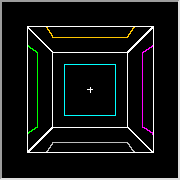
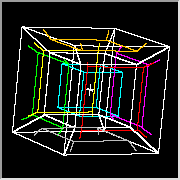
Now let's turn 45 degrees to the right, so that we're looking at the center of a side. (You can do this for yourself within the game if you turn off align mode.)
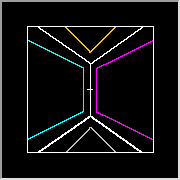
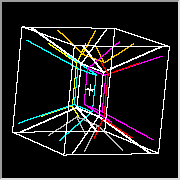
Now we can turn upward and see the center of an edge.
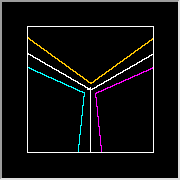
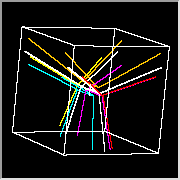
Notice the triangular symmetry—the edge is surrounded by three sides and three faces.
Finally, we can turn inward and look at a vertex. The vertex has tetrahedral symmetry, and is surrounded by four edges, six sides, and four faces.

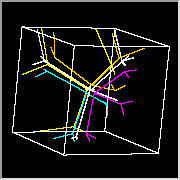
It's interesting to see the similarities between three- and four-dimensional worlds in the sequence shown above, but it's also interesting to go back and compare the corresponding k-dimensional parts. Here, for example, are the three-dimensional and four-dimensional vertices.


See Also
The Hexadecachoron
How to Point